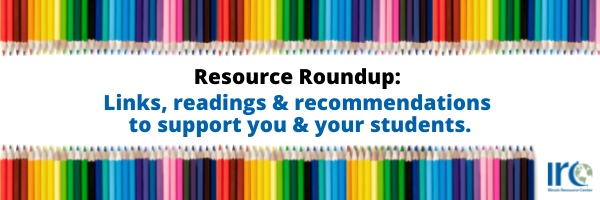Over the past few weeks, the IRC has asked members of our community to nominate Illinois teachers working with multicultural, multilingual students who are going above and beyond, and now, we’re celebrating them and highlighting their work. Keep an eye out for these features in the coming months – and if you’d like to nominate someone, email leanet@cntrmail.org. Next up is Yesenia Reyes, an instructional coach at Barry Elementary, a dual language school in Chicago.
Says Babette Moeller, who nominated her: “For her dedication to help all students, including multilingual learners and students with disabilities, achieve high-quality learning outcomes in mathematics, and for supporting teachers in adapting mathematics lessons so all students have opportunities to learn.”
For Yesenia Reyes, who teaches at the dual-language Barry Elementary in Chicago, her approach to teaching math to multilingual students is always about lessons that provide access. She will give students multiple entry points–if students prefer paper-pencil methods, manipulatives or prefer to verbalize their thinking, she seeks to give them opportunities to do that. “In the back of my mind, I know my students and their strengths, so it’s not just ‘how do I achieve this objective,’ but ‘how do I consider what my students’ needs are and utilize their strengths to achieve it,’” she says.
Making space for language can be powerful not just for completing the learning objectives at hand, but for building trust and community in the classroom, as Reyes illustrates. A few years ago, Reyes had a math class with several newcomers who were just beginning to learn English. As a dual language school, by the time students reach 6th grade at Barry, most have comfortably developed English and Spanish.
So Reyes decided to encourage her students to come together. She speaks Spanish but Spanish is not her first language academically, so she invited her students to be the teachers in the classroom when it came to language. She would empower students by encouraging them to help with translation, by asking students, “Hey, this is how I would say this, but how would you say it?” Eventually, students began assisting with this process on their own. “Allowing myself to say ‘I need help,’ allowed created a safe space for language to become a welcomed resource for all students that to be accessible,” Reyes says.
Reyes says that language is power and shouldn’t be a barrier to learning. For a school with an influx of newcomers trying to navigate a new culture, language and schooling experience, inviting these kinds of language experiences can be beneficial not just to support newcomers, but to comfortably empower multilingual students to contribute to a community of learning.
“Having a second language is a powerful resource and an opportunity for everyone to learn,” Reyes says. “Creating this type of equity was a cultural shift but it allowed for my students to take ownership and pride in their learning. It’s one of those practices I continue to take with me.”
Reyes says when planning, teachers should not only consider students’ mathematical abilities but consider all aspects of their students, including language. She says teachers should be mindful of the ways instructional materials may create barriers, and intentional with their planning to construct lessons in a way that strikes a balance between giving students they access they need to grow and excel without watering down or removing the objective from the lesson.
“Our students are capable of so much,” Reyes says. “I think it’s up to us as instructors to create those opportunities so we allow their talents and their abilities to come to the surface.”



